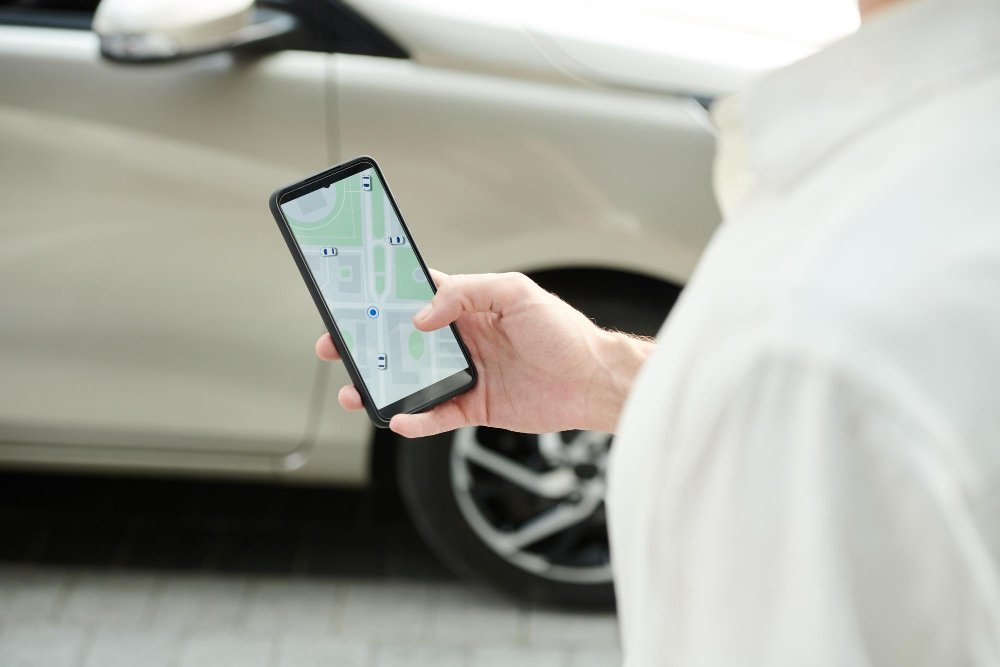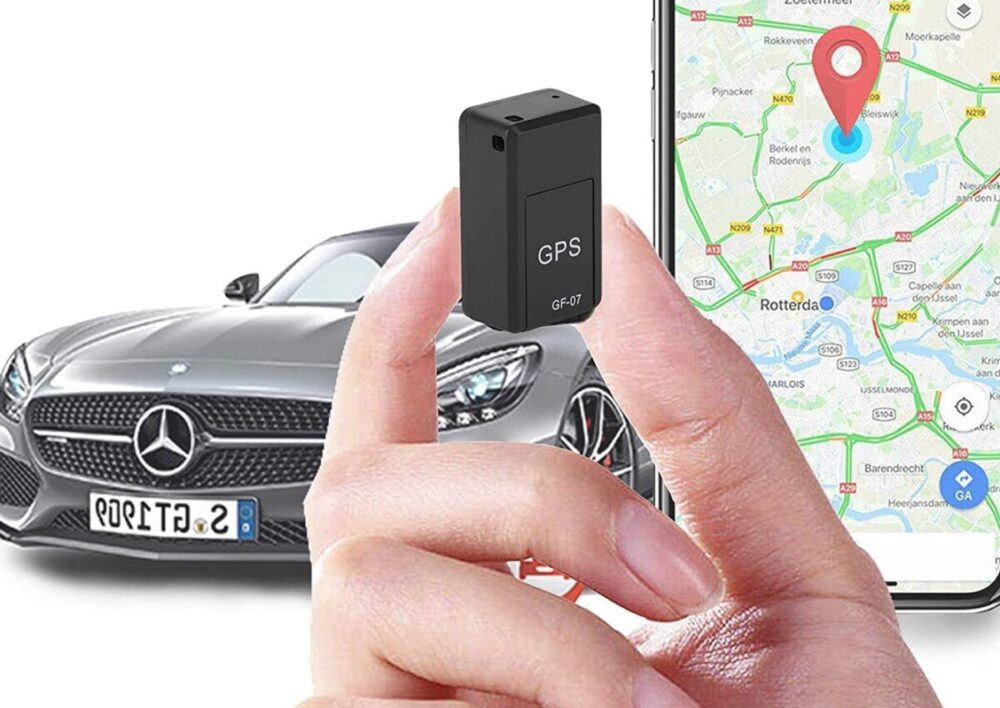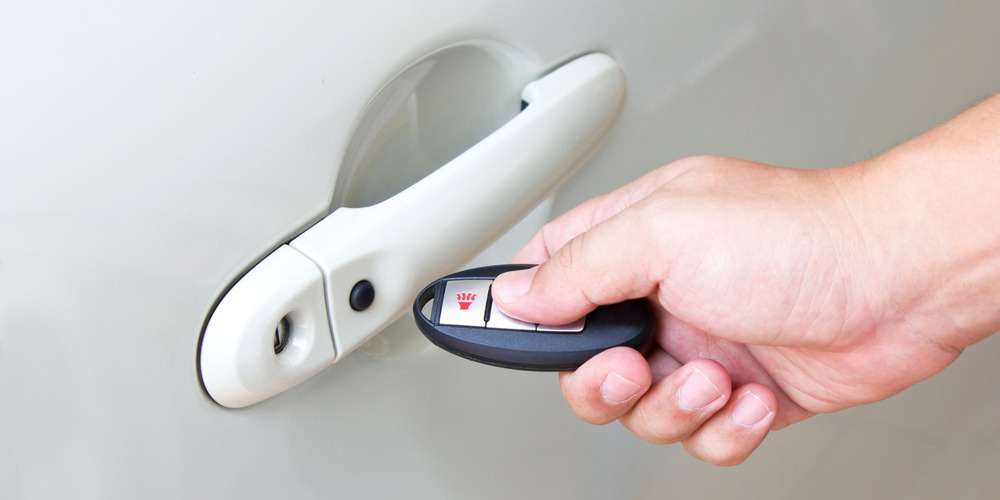Are you tired of worrying about the safety of your beloved car? Do you wish there was a way to enhance its security and breathe a sigh of relief? Look no further! In today’s fast-paced world, technology has come to our rescue once again with an ingenious solution – GPS trackers. These tiny devices have revolutionized car security, offering not only real-time tracking but also peace of mind for car owners worldwide. Join us as we delve into the world of GPS trackers and uncover everything you need to know about improving your car’s security like never before. Buckle up, because this blog post will take you on an exciting journey towards safeguarding your vehicle in style!
Introduction to Car Security and its Importance:
Car security is a crucial aspect of car ownership that often gets overlooked until it’s too late. With the increase in car thefts and break-ins, it has become more important than ever to ensure that your vehicle is adequately protected. The use of GPS trackers has revolutionized the way we approach car security, providing an effective and reliable solution to keep our vehicles safe locate real-time.
GPS (Global Positioning System) trackers are small devices that use satellite technology to determine the exact location of a vehicle. They can be easily installed in any type of vehicle and have become increasingly popular due to their ability to enhance car security. These devices work by sending real-time data about the vehicle’s whereabouts, speed, direction, and other vital information to the owner through a mobile app or website.
One might wonder why investing in a GPS tracker is necessary when most modern cars come with built-in security systems. However, these factory-installed systems are not always foolproof and can be easily bypassed by experienced thieves. In contrast, GPS trackers provide an added layer of protection that can help recover your stolen vehicle quickly.

What is a GPS tracker and how does it work?
A GPS tracker, or Global Positioning System tracker, is a device that uses satellite technology to provide real-time location information of an object or person. It works by receiving signals from multiple satellites orbiting the Earth and using triangulation to determine the exact location of the GPS tracker.
The first step in understanding how a GPS tracker works is understanding how a GPS system operates. The GPS system consists of 24 satellites that are constantly transmitting signals to Earth. These satellites have atomic clocks that send out precise time signals along with their current location. The receiver, i.e., the GPS tracker, receives these signals and calculates its distance from each satellite based on the time it takes for the signal to reach it.
Benefits of using a GPS tracker for car security
GPS trackers have become an increasingly popular tool for car security in recent years. These devices use global positioning system (GPS) technology to track the location of a vehicle, providing real-time updates on its movements and whereabouts. In addition to helping in recovering stolen vehicles, GPS trackers offer a range of benefits that make them a valuable asset for car owners looking to improve their vehicle’s security.
One of the main benefits of using a GPS tracker for car security is the ability to track your vehicle’s location at all times. With this technology, you can know exactly where your car is at any given moment. This can be especially useful in case of theft or unauthorized use of your vehicle. You can quickly locate your car and alert authorities to its exact location, increasing the chances of recovery.
Moreover, GPS trackers provide continuous monitoring of your vehicle’s movements. This means that you will receive alerts whenever there is any suspicious activity such as unexpected movement or if the car leaves a designated area. These notifications allow you to take immediate action and prevent potential theft or damage to your vehicle.
Another advantage of using a GPS tracker for car security is the ability to set up geofencing boundaries. Geofencing allows you to create virtual boundaries around specific areas, such as your home or workplace. If your car enters or exits these defined boundaries without authorization, you will receive an instant alert on your phone. This feature not only helps in protecting against theft but also provides peace of mind knowing that your vehicle is within its designated safe zone.

Types of GPS trackers available in the market
GPS trackers have become an essential tool for car security, providing peace of mind for car owners and acting as a deterrent for potential thieves. With advancements in technology, there are now different types of GPS trackers available in the market to cater to various needs and preferences. In this section, we will explore the different types of GPS trackers and their features.
-
Plug-and-Play Trackers:
These are the most common type of GPS trackers available in the market and are often used by individuals who want a simple and straightforward tracking solution. These trackers can be easily plugged into the OBD (On-Board Diagnostics) port of your vehicle without any professional installation required. They provide real-time tracking information such as location, speed, and route history.
-
Hardwired Trackers:
Hardwired trackers require professional installation by connecting them directly to your vehicle’s battery or electrical system. Unlike plug-and-play trackers, they are hidden from view and cannot be easily removed or tampered with by thieves. These trackers offer all the features of plug-and-play models but with added security measures.
-
Battery-Powered Trackers:
Battery-powered trackers are ideal for those who do not want to modify their vehicle’s wiring or need a portable tracking solution that can be used on multiple vehicles. They come with rechargeable batteries that provide continuous tracking for several days before needing to be charged again.
-
Magnetic Trackers:
Magnetic GPS trackers have strong magnets attached to them, making them easy to attach to metal surfaces such as undercarriages or wheel wells without requiring any professional installation or wiring modifications. These compact and discreet devices offer real-time tracking capabilities just like other types of GPS trackers.

Features to consider when choosing a GPS tracker for your car
When it comes to choosing a GPS tracker for your car, there are several features that you should consider to ensure that you get the most effective and reliable device. These features will not only improve the security of your car but also provide you with peace of mind knowing that your vehicle is constantly being monitored.
- Real-Time Tracking: This is perhaps one of the most important features to look for in a GPS tracker. Real-time tracking allows you to monitor the exact location of your car at any given time. This feature is especially useful in case of theft or if your car has been borrowed by someone else. With real-time tracking, you can quickly locate your vehicle and take necessary action.
- Geofencing: Geofencing allows you to set up virtual boundaries on a map and receive alerts whenever your car enters or exits these boundaries. This feature is particularly helpful if you want to keep track of your teenage driver’s whereabouts or if your car is used for business purposes. It also helps in preventing unauthorized use of the vehicle.
- Battery Life: The battery life of a GPS tracker is another important factor to consider. A long-lasting battery means that you can track your car for an extended period without having to recharge it frequently. Some trackers come with a built-in rechargeable battery while others require external batteries, so make sure to choose one that best suits your needs.
- Connectivity: GPS trackers use different methods for communication such as cellular networks, satellite systems, or Bluetooth technology. Depending on where you live and travel, certain connectivity options may work better than others. For example, if you often drive in remote areas with poor cell reception, then a satellite-based GPS tracker would be more suitable.
Step-by-step guide on installing a GPS tracker in your car
Installing a GPS tracker in your car is an effective way to improve its security and keep track of its location. These devices use satellite technology to provide real-time location updates, making it easier for you to monitor your vehicle’s movements. In this step-by-step guide, we will walk you through the process of installing a GPS tracker in your car.

Step 1: Choose the Right GPS Tracker
The first step in installing a GPS tracker is choosing the right device for your car. There are various types of trackers available in the market, such as plug-and-play trackers that can be easily inserted into your car’s OBD-II port or hardwired trackers that require professional installation. Consider factors like budget, features, and compatibility before making a decision.
Step 2: Prepare Your Car
Before you start with the installation process, make sure to park your car in a well-lit and open area where you have access to all sides of the vehicle. It is also essential to disconnect the negative terminal of your car battery to avoid any electrical mishaps during the installation.
Step 3: Locate and Access Your Car’s OBD-II Port (Optional)
If you have chosen a plug-and-play tracker, locate your car’s OBD-II port usually located under the steering wheel or dashboard. Remove any covers or panels obstructing access to this port.
Step 4: Connect Your GPS Tracker
If using an OBD-II tracker, simply insert it into the designated port until it clicks into place securely. For hardwired trackers, carefully connect each wire as per the instructions provided by the manufacturer. Make sure all connections are tight and secure before proceeding further.
Step 5: Hide The Tracker
To prevent tampering or theft of your GPS tracker, it is crucial to hide it from plain sight. You can tuck away wires behind panels or under carpets for hardwired devices. For plug-and-play trackers, you can secure them with a zip tie or tape to keep them in place.
Step 6: Test Your Tracker
After completing the installation, it is essential to test your tracker to ensure it is functioning correctly. Reconnect your car battery and start the engine. Wait for the tracker’s LED light to turn on, indicating that it has successfully connected to GPS satellites. You can also use a mobile app or online portal provided by the manufacturer to track your car’s location in real-time.
Installing a GPS tracker in your car is an easy and effective way to improve its security and give you peace of mind. Just follow this step-by-step guide, and you’ll have a reliable tracking device installed in no time!

How to track your car using a GPS tracker
Tracking your car using a GPS tracker is an effective way to improve your car’s security and ensure its safety. A GPS tracker is a small device that can be easily installed in your car and connects to satellites to provide real-time location data. In this section, we will discuss how you can track your car using a GPS tracker.
- Choose the Right GPS Tracker:
The first step towards tracking your car is to choose the right GPS tracker for your vehicle. There are many types of trackers available in the market, such as plug-in trackers, hardwired trackers, and OBD port trackers. Each type has its own features and advantages, so it is essential to research and select one that best suits your needs.
- Install the Tracker:
Once you have chosen the right GPS tracker for your car, you need to install it properly. The installation process may vary depending on the type of tracker you have selected. Some require professional installation, while others come with simple DIY instructions. It is crucial to follow these instructions carefully to ensure proper functioning of the device.
- Activate Your Tracking Account:
Most GPS trackers require an active account for tracking purposes. Once you have installed the device in your car, you need to activate your tracking account by creating a username and password or registering through an app on your phone.
- Monitor Your Car’s Location:
Once everything is set up correctly, you can start monitoring your car’s location using the tracking software or app provided by the manufacturer. You will be able to see real-time updates on where your car is located at any given time.
Tracking your car using a GPS tracker is an effective way to improve its security and ensure its safety. By following these steps, you can easily track your car’s location and movement, making it easier to prevent theft and keep an eye on your vehicle at all times.

Additional features and services offered by some GPS tracking companies
In addition to the standard features of GPS tracking systems, some companies offer additional services and features that can further improve car security. These services and features are designed to provide extra layers of protection and enhance the overall effectiveness of the GPS tracking system.
One such feature is geofencing, which allows users to set up virtual boundaries or zones for their vehicles. If the vehicle moves outside of these designated areas, an alert will be sent to the user through a notification on their phone or email. This feature is particularly useful for businesses that have specific delivery routes or fleet management needs, as it can help monitor unauthorized use of company vehicles.
Another useful feature offered by some GPS tracking companies is real-time tracking. This means that users can track their vehicles in real-time, with updates every few seconds or minutes instead of longer intervals. Real-time tracking provides more accurate location data, making it easier to recover a stolen vehicle quickly.
Tips for Maintaining and Maximizing the Functionality of GPS Trackers to Improve Car Security
Now that you have installed a GPS tracker in your car and are reaping the benefits of increased security, it is important to ensure that your device continues to function effectively. Here are some tips for maintaining and maximizing the functionality of your GPS tracker:
- Regularly Check Battery Life: Most GPS trackers run on batteries, so it is crucial to regularly check their battery life. Make sure to replace or recharge them when necessary, as a dead battery will render your tracker useless.
- Keep the Device Clean: Dust and debris can accumulate on the surface of your GPS tracker, obstructing its signals and reducing its accuracy. It is advisable to clean it with a soft cloth regularly, especially if you live in an area with high levels of pollution.
- Install Inconspicuously: While installing your GPS tracker, ensure that it is hidden from plain sight as this reduces the risk of tampering or theft. Additionally, make sure that there are no metal objects obstructing its signal.
- Test Signal Strength: Before relying on your GPS tracker for real-time tracking, test its signal strength first by taking it out for a drive around town. This will help you identify any potential weak spots or obstructions along common routes.

By following these tips, you can ensure that your GPS tracker continues to function effectively and provides maximum security for your car. Remember, regular maintenance and care are essential for the longevity and reliability of any device.





